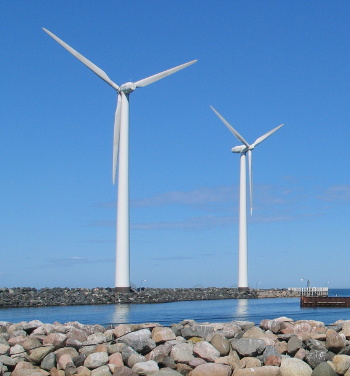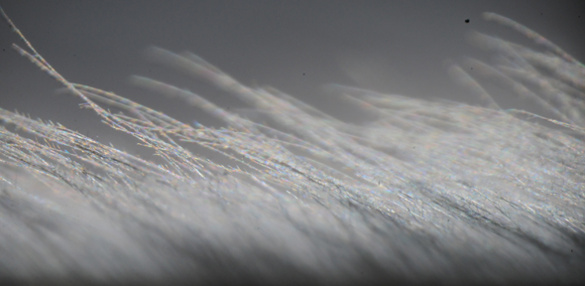
Owls and Stealthy Wind Turbines
July 23, 2015 Bell, Book and Candle (1958, Richard Quine, Director) is one of my favorite classic films.[1] Among its cast of many stars is Kim Novak, who plays a modern witch assisted in her magic by her "familiar," a cat named, Pyewacket. The idea of a familiar is not recent. It goes back to Greek mythology, where the goddess, Athena, was often accompanied by a small owl of the species, Athene noctua (see figure). | Athena's owl, as pictured on a tetradrachm, a four drachma silver coin, ca. 480-420 BC. These coins were known colloquially as glaukes (γλαυκες, owls) (Photo by Marie-Lan Nguyen, via Wikimedia Commons.) |
 | A barn owl of the species, Tyto alba. These owls are also known as "church owls" and "screech owls." (Illustration by Thomas Bewick from the History of British Birds, 1847, via Wikimedia Commons.) |
 | Detail of a wind farm at Bønnerup Strand, Denmark. The blades of a wind turbine periodically disturb airflow, causing turbulence to create sound, which is an amplitude modulated pressure wave. (Photo by Dirk Goldhahn, via Wikimedia Commons.) |
"No other bird has this sort of intricate wing structure... Much of the noise caused by a wing - whether it's attached to a bird, a planes or a fan - originates at the trailing edge where the air passing over the wing surface is turbulent. The structure of an owl's wing serves to reduce noise by smoothing the passage of air as it passes over the wing - scattering the sound so their prey can't hear them coming."[2]The research team endeavored to simulate this structure in a turbine blade coating. Coating blades with nothing more complicated than a mesh material similar to a wedding veil lowered the surface noise by as much as 30 decibel (dB).[2] They upgraded the design by 3D printing a pattern in plastic. They tested the pattern on a segment of a full-sized turbine blade in a wind tunnel and found a noise reduction of 10 dB without any great affect on aerodynamics.[2]
 |
| Microscope image of a flight surface feather of a Great Grey Owl. These feathers are unlike those of other birds. (Cambridge University photo by J. Jaworski.) |
References:
- Bell, Book and Candle (1958, Richard Quine, Director) and the Internet Movie Database.
- Silent flights: How owls could help make wind turbines and planes quieter, University of Cambridge Press Release, June 22, 2015.
- Web Site of the American Institute of Aeronautics and Astronautics (AIAA) Aeroacoustics Conference, Dallas, Texas, June 22-26, 2015.
- Advantages and Challenges of Wind Energy, US Department of Energy, Office of Energy Efficiency & Renewable Energy Web Site.
- Frequently Asked Questions - How is electricity used in U.S. homes, US Energy Administration Web Site.